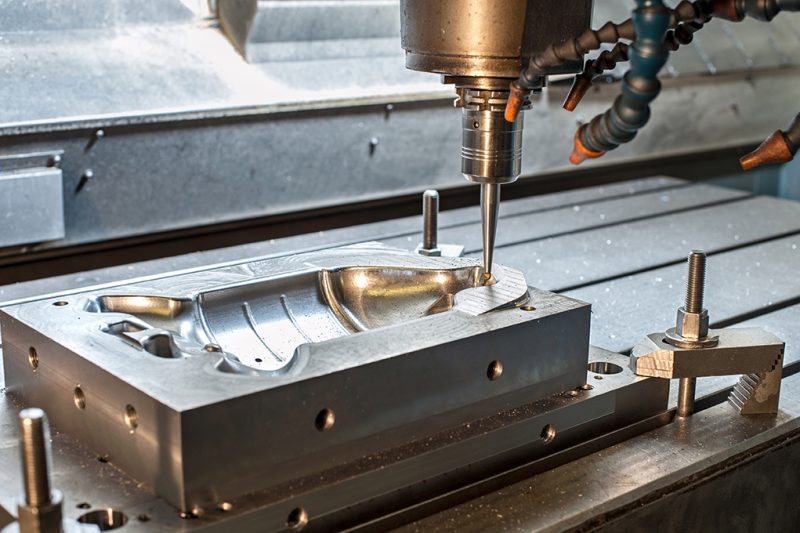Rapid Injection Molding: Fast-Tracking Innovation Across Industries
In today’s fast-paced world, the demand for speed and efficiency in product development has never been greater. Rapid injection molding has emerged as a transformative technology, enabling businesses across various industries to accelerate their innovation processes. By significantly reducing the time required to produce high-quality plastic parts, this method streamlines everything from prototyping to mass production, allowing companies to bring their ideas to market quicker than ever before.
The versatility of rapid injection molding makes it an invaluable asset in sectors ranging from automotive to consumer goods. Manufacturers can produce intricate designs with precision and consistency, which not only enhances product quality but also reduces material waste. As industries continue to prioritize rapid development cycles and sustainability, understanding the main applications of rapid injection molding becomes essential for staying competitive and meeting evolving consumer demands.

Understanding Rapid Injection Molding
Rapid injection molding is a modern manufacturing process that streamlines the production of plastic components by using advanced technology to create molds quickly and efficiently. This technique combines the principles of traditional injection molding with innovative production methods to significantly reduce lead times, making it an ideal choice for industries that require rapid prototyping and short production runs. By leveraging specialized materials and optimized design processes, rapid injection molding facilitates faster turnaround without compromising on quality.
One of the key advantages of rapid injection molding is its ability to support product development cycles that demand swift iterations. Companies can develop prototypes much faster, allowing for timely feedback and revisions during the design phase. This increased speed not only accelerates time-to-market but also enhances the overall innovation process. As industries across the board face competitive pressures to deliver new products quickly, rapid injection molding becomes a critical tool in enabling businesses to adapt and meet market demands effectively.
Furthermore, rapid injection molding opens doors for customization and flexibility in production. Manufacturers can create complex geometries and detailed features that cater to specific customer needs while maintaining cost-effective practices. This adaptability is transforming various sectors, including automotive, healthcare, and consumer goods, where the capability to produce tailored solutions efficiently can significantly impact overall business performance. Rapid injection molding is thus reshaping the landscape of modern manufacturing, fostering innovation and responsiveness across industries.
Key Benefits for Industries
Rapid injection molding offers significant time savings, allowing companies to bring products to market much faster than traditional molding methods. By streamlining the production process, businesses can reduce lead times and respond more effectively to changing market demands. This agility is crucial in competitive industries where the ability to launch new products quickly can lead to a substantial competitive advantage.
Cost efficiency is another major benefit of rapid injection molding. The process minimizes waste and reduces the need for expensive tooling and machinery, leading to lower production costs. This allows companies of all sizes to produce high-quality parts without the financial burden typically associated with traditional injection molding. As a result, small and medium enterprises can also leverage the technology to innovate and expand their product offerings.
Additionally, rapid injection molding enables greater design flexibility, making it easier for companies to experiment with new concepts and prototypes. The ability to iterate designs quickly means that feedback can be integrated promptly, ensuring that products are not only functional but also aligned with user needs and market trends. This capacity for rapid iterations can significantly enhance product quality and user satisfaction across various industries.
Future Trends and Innovations
The future of rapid injection molding is poised for significant advancements as technology continues to evolve. One of the most promising trends is the integration of artificial intelligence and machine learning into the molding process. These innovations can optimize production parameters, reduce cycle times, and enhance the overall quality of the molded parts. As manufacturers adopt smart systems, the potential for predictive maintenance and real-time monitoring becomes a reality, leading to increased efficiency and reduced downtime in production lines.
Another exciting development is the growing use of sustainable materials in rapid injection molding. As industries move towards more environmentally friendly practices, the demand for biodegradable and recyclable thermoplastics is on the rise. Companies are investing in R&D to create new materials that not only meet performance standards but also align with sustainability goals. The adoption of these innovative materials could revolutionize product development across various sectors, making rapid injection molding a key player in the green manufacturing movement.
Lastly, the rise of customization in consumer products is influencing rapid injection molding practices. As consumers increasingly seek personalized solutions, manufacturers are leveraging rapid injection molding to produce low-volume, high-variability items efficiently. This capability allows for quick iterations and adaptations in product design, enabling businesses to respond swiftly to market trends and customer preferences. The synergy between customization and rapid injection molding is set to transform the way products are designed and brought to market, reinforcing its importance across multiple industries.